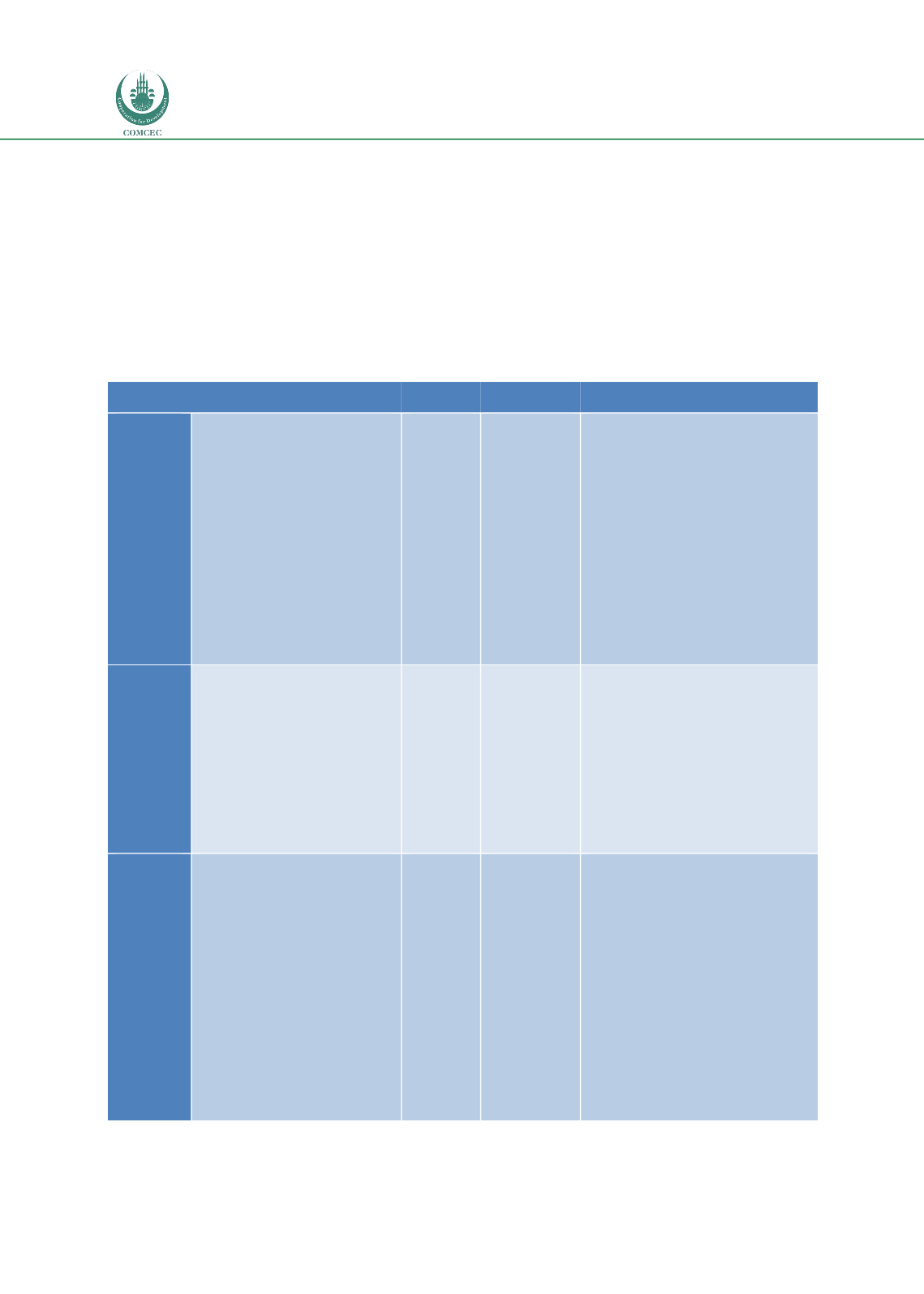

Reducing Postharvest Losses
In the OIC Member Countries
52
A number of general factors increase the likelihood of occurrence of the all types of
postharvest losses in small-scale fisheries. Sources of concern are times of fish supply
excess/glut, inadequate preservation techniques and processing and storage methods, adverse
weather conditions, unskilled labour, and general market conditions not strictly related to the
fish sector. Others include poor transportation due to inadequate infrastructure, non-
refrigerated trucks, and long distances between land sites and markets.
Table 17 presents a summary describing the main losses in the fisheries and aquaculture value
chains.
Table 17: Main causes of postharvest losses in the fisheries and aquaculture value chains
Fish chain
stage
Cause of Losses
Main type
of losses
Geographical
areas
Losses reduction strategy
Fishing
Discards of fish;
Fish falling from net during
hauling;
Improper
handling
causing
bruising;
Fish spending too much time in
nets and spoiling;
Absence of chilling on board;
Glut catches;
Scarce law enforcement and
governance;
Harmful
fishing
techniques
(dynamite, chemicals, etc.)
Damage to fish in nets by
predators (otters, sharks, seals,
crabs, crayfish etc.)
Physical,
Quality
Worldwide
(discards);
Developing
countries,
especially in
Sub-Saharan
Africa
(spoilage due
to scarce in
board
facilities).
Trawl gear modifications such as
discard exclusion devices
Use of ice /chilled or refrigerated sea
water/brine;
Freezing at sea;
Use of fish boxes on-board
Landing fish as fast as possible;
Covering fish with sacking or clothes
to avoid direct sun heating/pouring
water on it (evaporative cooling);
Law enforcement;
Promotion of consumption towards
less valued fish species (utilization of
discards/bycatch).
Landing
Lack of infrastructure and
services conducive to good
handling and storage;
Lack of ice/chilling
Delays
in
selling/price
negotiation
Fish thrown or drops from
containers during unloading and
transport;
Bird depredation;
Fish on ground exposed to dirt
and high ambient temperatures
Physical,
Quality
Developing
countries,
especially in
Sub-Saharan
Africa.
Proper landing site facilities and
management of the same
Use of ice on shore;
Insulated boxes/cold room
Implementation
of
food safety
legislation
Processing
Low processing capacity to
absorb fish landed;
Traditional
processing
techniques (i.e. open air and sun-
drying);
Adverse weather conditions
(rainy/cloudy season, as well as
climate variations) making drying
difficult;
Poor water quality for washing
fish;
Bird
depredation/insect
infestation;
Unskilled workforce;
Scarce or absent packing system
Poor quality raw material for
processing
Physical,
Quality,
Nutritional
Developing
countries,
especially in
Sub-Saharan
Africa.
Drying on raised racks, mats or
concrete surface;
Using
more
modern
drying
techniques (i.e. Chorkor oven, FAO-
Thiaroye improved smoking and
mechanical drying);
Salting before drying;
Screens to prevent insect infestation
(especially blowflies);
Controlled use of insecticides and
fumigants;
Good hygienic conditions;
Use of clean water
Use of good quality raw material
(fresh fish)
















